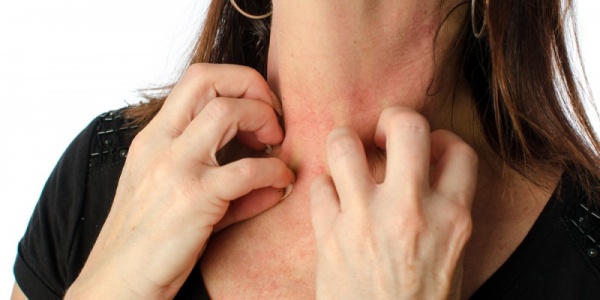Common Skin Problems

- Be it a minor or major skin problem, get it checked by your dermatologist at the earliest; it might indicate some other health condition
- Get treated early to help prevent complications from shingles infection causing blisters on trunk, buttocks or other parts of the body
- Hives are itchy and inflamed bumps on the body that sting or burn. Use of antihistamines and skin creams should help for a quick relief.
- Let an immunologist/rheumatologist check your skin if you notice red patches on skin with white or silvery scales. It could be psoriasis.
- Eczema is non-contagious condition that shows up as red, dry, and itchy skin for causes unknown. Topical or oral medication should provide relief.
- Rosacea causes redness on nose, chin, cheeks, or forehead and can be treated using oral topical or laser treatments.
- Get prescription meds or creams for cold sores that are small, painful, fluid-filled blisters on your mouth or nose from Herpes Infection.
- Always use a shaving cream or foam to avoid razor bumps. Or have hot shower before you shave.
- Skin tags are common in women and elderly appearing on neck, chest, back, armpits, under the breasts or in the groin area. Seek medical attention if they are irritating or aesthetically disturbing
- Bacteria and hormones infect skin pores and cause acne; they typically show up on face, chest, and back; and keeping these areas clean and dry may provide relief.
- Athlete’s foot is a contagious fungal infection that causes your feet to peel, turn red, itch, and burn. Seek medical attention.
- Consult a dermatologist immediately if your mole has irregular borders, unusual colour bleed or itch.
- Consult your dermatologist if you see sudden appearance of change in appearance of age spots.
- Pityriasis rosea shows up as scaly, pink patch with a raised border usually in young adults and youngsters; typically subsides in 6 to 8 weeks without treatment.
- Melasma (chloasma) appears as a tan or brown patch on cheeks, nose, forehead, and chin; can be treated with prescription creams, meds and lasers.
- Warts appear on hands and skin due to papillomavirus infection; treatments include topical creams, ablation, surgery or laser.
- Consult a dermatologist if you notice a dark multicolored skin growths with grainy surface; they could be noncancerous growth (Seborrheic Keratoses) moles or skin cancer.
